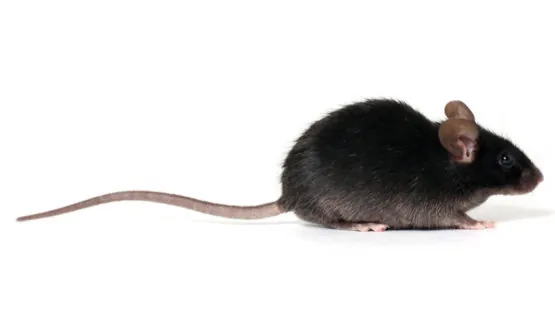Stem cell transplants have been of great interest to aging researchers, and, in a new study, they have successfully increased mouse lifespan by using stem cell therapy. While this has been previously achieved, this experiment was more refined than older studies and sheds new light on the potential of tissue regeneration through stem cells.
The significant extension of maximum lifespan could be considered an indication that any intervention is targeting a core hallmark of aging or, in the case of small increases of lifespan, at least indirectly influencing it.
Through bone marrow transplants, the researchers have significantly increased the lifespans of mice and believe that they are directly targeting an aging process directly [1]. Given that stem cell exhaustion is a hallmark of aging, they are likely correct.
While we know a fair amount about tissue-resident stem cells and their role in tissue regeneration and repair, the part that circulating stem cells in our blood play is less well understood. These researchers have conducted prior studies using undifferentiated stem cells, cells that have not yet committed to becoming a particular cell type in the body, and they found that these cells differentiate into specialized cell types based on their environment.
This supports the possibility that tissue regeneration could occur via an injection of undifferentiated stem cells or potentially through approaches such as bone marrow transplants. In some cases, bone marrow transplants appear to treat not only blood diseases but also other conditions, such as mucopolysaccharidosis, senile hearing loss, bullous epidermolysis, and cancer.
A number of previous studies have shown that stem cell transplants appear to slow aging [2-4]; however, this new study is different from these experiments in a few ways. These researchers have used a considerably larger amount of transplant material, the donors and transplantees were genetically closely related due to the mouse strain and inbreeding, and the transplanted cells were not exposed to chemotherapy agents or radiation, which are both harmful to cells and can induce cellular senescence, which is another reason we age.
The researchers wanted to find out what effect bone marrow stem cell transplantation would have on maximum lifespan in mice that had reached an age at which half of their population had already died from age-related diseases. This would be around 70-80 years old in human terms, an age at which the number of stem cells in the bone marrow is a tenth of what it was at birth.
Normally, bone marrow stem cell transplants are preceded by myeloablative conditioning, a medical procedure that consists of either chemotherapy or radiation sufficient enough to destroy the myeloid cells other than red blood cells and platelets, thus paving the way for new bone marrow material to be implanted. However, with this new method, replacement material can be transplanted without myeloablative conditioning.
The result of waiting till the mice were older and had severely depleted stem cell reserves in their bone marrow was an increase of 28% to maximum lifespan, which is a significant amount.
Abstract
The goal of this work was to determine the effect of nonablative syngeneic transplantation of young bone marrow (BM) to laboratory animals (mice) of advanced age upon maximum duration of their lifespan. To do this, transplantation of 100 million nucleated cells from BM of young syngeneic donors to an old non-ablated animal was performed at the time when half of the population had already died. As a result, the maximum lifespan (MLS) increased by 28 ± 5%, and the survival time from the beginning of the experiment increased 2.8 ± 0.3-fold. The chimerism of the BM 6 months after the transplantation was 28%.
For the first time rejuvenation therapy was started so late, at the point when half of the animals had already died, and the high (31 ± 5%) extension in maximal lifespan of the remaining animals was found. Such significant effect on the maximal lifespan, unlike the median lifespan fluctuations, indicates that BM transplantation affects the intrinsic aging mechanism. The life-extending effect was significantly stronger than in earlier works with similar design (no irradiation or chemotherapy, no hereditary pathologies in recipients, advanced age at the start of the BM administration) because of (i) the larger amount of transplanted material and (ii) the close relation of the donors and recipients. The result is encouraging for clinical adaptation for aged humans (70–80-years old).
The observed lifespan extension was accompanied by extension of an active and healthy life period.
The bone marrow chimerism of recipients after BM transplantation was significant (28% of nucleated BM cells were of donor origin) and permanent (it lasted for at least 6 months after the transplantation), indicating that rejuvenation is caused not only by the paracrine effect but also by direct cell replacement.
Conclusion
A number of researchers support the notion of a top-down approach to tissue regeneration, such as using bone marrow transplants to replace age-related stem cell losses. These results clearly show that mouse rejuvenation is happening not only due to the beneficial signals that the stem cells give off, which facilitate healing and reduce inflammation given off, but is also happening as the result of directly replenishing lost stem cells from the pool.
Perhaps the most important thing about this particular study is that it was carried out specifically on older mice who had already lost a considerable amount of their available bone marrow stem cell pools. By replacing those losses, these researchers are directly addressing an aging process, and the result is a large extension of healthy lifespan.
This has implications for treating aged humans who are 70-80 years old, and it supports the notion that the point of no return is considerably later in life if, indeed, there exists a point at which someone cannot be effectively rejuvenated by repair-based approaches to aging.
As a result of their study, these researchers wish to see the rapid implementation of non-ablative stem cell transplantation into the clinic not only for the treatment of pathology but also for rejuvenation in older people. It appears in this case that age-related stem cell depletion makes conditions more favorable for fresh replacement stem cells, so let us hope that this becomes the standard of care soon.
Literature
[1] Kovina, M., Khodarovich, Y., Karnaukhov, A., Krasheninnikov, M., Kovin, A. L., Gazheev, S., … & Dyuzheva, T. (2019). Extension of Maximal Lifespan and High Bone Marrow Chimerism After Nonmyeloablative Syngeneic Transplantation of Bone Marrow From Young to Old Mice. Frontiers in Genetics, 10, 310.
[2] Kamminga, L. M., van Os, R., Ausema, A., Noach, E. J., Weersing, E., Dontje, B., … & de Haan, G. (2005). Impaired hematopoietic stem cell functioning after serial transplantation and during normal aging. Stem cells, 23(1), 82-92.
[3] Li, J., Zhang, Y., & Liu, G. X. (2010). Anti-aging effect of transplantation of mouse fetus-derived mesenchymal stem cells. Sheng li xue bao:[Acta physiologica Sinica], 62(1), 79-85.
[4] Shen, J., Tsai, Y. T., DiMarco, N. M., Long, M. A., Sun, X., & Tang, L. (2011). Transplantation of mesenchymal stem cells from young donors delays aging in mice. Scientific reports, 1, 67.




